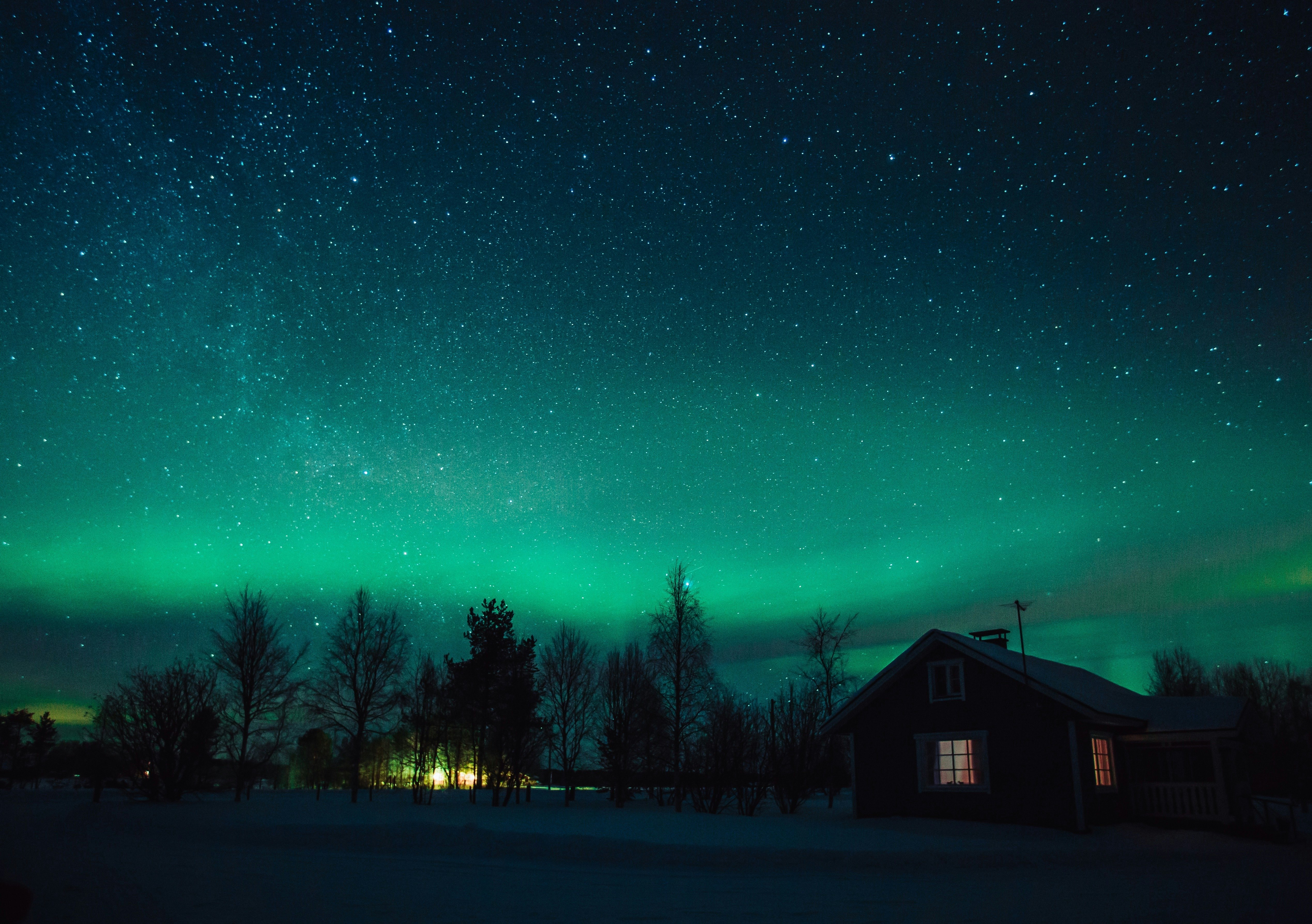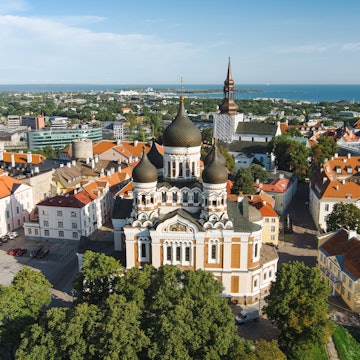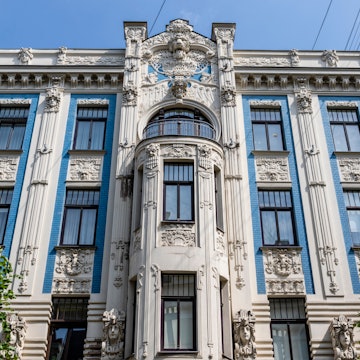
Finnish-ing touches: all you need to know before your trip to Finland

Apr 24, 2022 • 9 min read

In Finland, the sauna is a way of life – and an essential experience for any visitor © Jonathan Stokes / Lonely Planet
Finland is the kind of place a child with a particularly vivid imagination might dream up, complete with flying reindeer, the real Santa and so much snow.
It’s a place of extremes – of darkness and light, of bitter cold and unfathomable wilderness. And it’s bound to be right up there with your Nordic dream destinations, whether you’ve come to dash through frozen forests by husky-drawn sleigh as the Northern Lights flash overhead in Lapland, or hunker down in a back-of-beyond summer cottage on the shores of a placid lake in the undying light of summer.
If you love saunas, silence and nature, you’ll fit right in. Here are the things to know to help you plan and prepare your trip and stay safe and healthy in Finland.
Planning your trip to Finland
Consider arriving outside of Helsinki
Helsinki is the country’s principal gateway, though if you’re coming to Finalnd for a non-urban adventure you might consider flying into a regional airport like Rovaniemi (gateway to Lapland and Santa HQ) or Tampere (gateway to the lakes) instead. Once you’re in Finland, public transport is pretty good and efficient, with trains and buses joining the dots between major cities and towns. But if you’re heading into the wilds, you should count on renting a car, as distances are vast. Pack drinks and snacks for the journey as there’s little in the way of services between hubs.
The roads that sweep north to Lapland are often empty, but you’ll need to watch out for reindeer (the Porokello app warns of high-risk reindeer-crash areas) and ice in winter.
Summers are for primeval pleasures; winters are for festive magic
Finland is too big for just one bite, so plan carefully and resist the temptation to cram everything into one trip.
Summer, you say? The Finns would agree: after long, dark, snowbound winters, they embrace the lighter days of summer with a truly biological urgency. June to August is a brilliant period for hiking and camping in wilderness areas like the reindeer-bobbled fells of Urho Kekkonen National Park in Northern Lapland, above the Arctic Circle. It’s also a great time to jump into a kayak to paddle the Lakeland (there are 188,000), waving to seals as you drift from one gorgeous little speck of an island to the next in Åland on the Baltic.
Summer is when Finns tiptoe away from the world and back to nature in middle-of-nowhere cottages, some of which are totally off the grid. Days are spent in gleefully primeval ways: foraging for berries, swimming in ice-cold lakes, relaxing in saunas and spending nights under a canopy of stars. The climax is Juhannus, or midsummer, in late June, when families come together for picnics and dancing around bonfires.
September is quiet and glorious in Lapland, with forests turning gold and crimson and reindeer beginning to rut. As snow arrives in October, a hush falls over the land and many sights and hotels close. But winter brings festive sparkle and visits to Santa in the Arctic north. As the days get shorter, you’ll enjoy the full-on Narnia effect, with dogsledding, snowmobiling, skiing and overnight stays in ice hotels. Get lucky in Lapland and you’ll see the Northern Lights come out to play (statistically October, November and March are best).

Keep costs down by eating at markets and camping
Finland isn’t cheap, but there are ways to cut costs and save a few euros. Make lunch your main meal of the day, as many restaurants and cafes serve a good-value all-you-can-eat lunch buffet that includes soups, salads and day specials. Most big towns also have a kauppahalli (covered market hall), where you can grab picnic fixings (breads, cheeses, deli produce, smoked fish) and graze at one of the stalls or cafes selling snacks.
Camping is an inexpensive way to travel around. Most campsites are excellent, with cabins to rent as well as plenty of space to pitch a tent – but they tend to only open from June to August. If you’re willing to forego the warm shower, you can wild-camp thanks to jokamiehenoikeus (everyman’s right) – a great (if adventurous) option in a country with 41 national parks and almost endless expanses of nature.
Etiquette in Finland: how to fit in with the locals
Keep things casual
Even in the heart of Helsinki, you can just tell that the Finns are craving the space and solace of the great outdoors, counting down the minutes and hours until they can give civilization the slip and escape to their mökki (summer cottage). The way they dress reflects their nature-loving spirit: casual, practical, sustainable and well suited to the extremes of the seasons. There’s no need to pack lots of fancy clothes, especially if you’re heading beyond the city (as you most likely are). Pack loose layers, thermals and sturdy walking shoes instead.
Say hello, Finnish style
Kissing on the cheek? No. As a nation that prizes extreme apartness, Finns are a touch more reserved when it comes to greetings. Making eye contact and shaking hands is pretty standard; friends and family tend to hug. “Hei” and “moi” are two ways to say “hello.” Repeat the latter twice (“moi moi”) and it doubles as goodbye. Oh, and remember to be punctual – the Finns always are.
Remember that silence is golden
The old “silence is golden” proverb never rings truer than in Finland. Deep and introspective, the Finns aren’t fans of idle chitchat. Silence here is rarely seen as awkward; if there’s nothing pertinent to say, that’s just fine. You’ll often see friends together in the sauna, silent, perfectly happy in each other’s quiet company. So if a conversation comes to a natural halt, don’t feel as though you have to fill in the gaps with small talk.
And if you’re planning on having a lively chat with your mates in the sauna, think again. In Finland, the sauna demands deep respect – legend even has it that if you behave immodestly, you’ll have to face the fury of the saunatonttu, or sauna elf, who might burn it down in fury.

Give the sauna a whirl – and take it seriously
Stripping naked, roasting in a sauna heated to 175°F (80°C), beating yourself with a circulation-boosting birch whisk (a vasta or vihta), then diving into an avanto (ice hole): this is a Finn’s idea of fun. Sounds masochistic? This country has 1001 ways to toughen you up and the ritual of the sauna (pronounced “sah-OO-nah” rather than “SAW-nuh”) is just one of them.
The sauna isn’t a luxury in Finland: it’s a way of life. Marriage, divorce, birth, death, new job: you name the life event and you can bet a sauna is involved. There are around three million saunas in Finland, in a country with a population of just 5.5 million. This is where the Finns socialize, do business, put the world to rights, rest, meditate and cleanse. Learning the art of sauna-going is offers a window into the country’s soul.
Public saunas are nearly always separated by gender. To sauna like a Finn, shower first, get naked, keep quiet, take a towel to sit on and ladle water onto the stove to produce fragrant löyly (steam), taking care not to splash too freely. You should work up a sweat in around 15 minutes – but remember, it’s not a competition. Take frequent breaks and drink water to rehydrate.

Embrace the outlandish
This isolated land of extremes has bred a nation of fiercely independent and idiosyncratic people. Squeaky cheese (leipäjuusto) you dunk in coffee, salty licorice (salmiakki), ice swimming, flying reindeer, Moomins: Finns love things that the rest of the world consider...odd. If you single out any of these quirky institutions for praise, you just might make friends for life here. This passion for the weird and wonderful extends to a crazy line-up of events, with world championships for everything from wife-carrying to air-guitar playing and swamp soccer.
Health and safety in Finland
Green, clean and conscientious, Finland is incredibly safe. Still, it’s worth bearing a few things in mind to make sure you stay healthy and happy.
Bring the bug spray
Though not exactly a health risk, the swarms of blood-thirsty insects that descend on the country’s north in summer can be a real bugbear. The mosquitoes, sandflies, midges and horse flies are at their most ferocious in July, but all summer long you’ll need to go armed with strong repellent, especially around lakes and in swampy, densely forested areas. In the wilderness, there are plenty of remote huts where you can crash with a mat and sleeping bag, but bringing along your own tent generally offers more protection from the mosquito storms.
Besides repellent, you might want to bring along a mosquito cap or hat and a travel net to cover your bed or your tent flap to keep the pesky biters at bay.
If you encounter any health issues, you’ll be in good hands
Perhaps it’s the air, the crystal-clear water at the turn of a tap, the vast open spaces, the long forest hikes, or the immune system-boosting saunas and ice swims: Finland radiates good health like few other places on earth. And the country has some of the best health care in the world – so if you do get sick you’ll be in the very best hands. As with all the Nordic countries, the level of care is extraordinarily high and doctors and medical staff generally speak excellent English.
There are specific travel vaccinations to worry about, though you’ll want to make sure you have decent travel insurance all the same, especially if you’re planning on a winter-sports extravaganza in Lapland or straying from the well-trodden-path in the wilds of a national park.
If you’re a citizen of the EU, European Economic Area (EEA) or UK, you’re entitled to emergency medical treatment with a European Health Insurance Card (EHIC) or UK Global Health Insurance Card (GHIC), though you will still have to pay a daily or per-appointment fee as a Finn would. Otherwise, look into whether your country has a reciprocal arrangement for free medical care in Finland.

Keep an eye out in the wild
Beyond the cities, Finland is a wild, wild place. As with all extreme climates, there are the obvious risks of exposure, hypothermia and frostbite in the Arctic north, and rivers can be prone to flooding when the snow melts. It goes without saying that you should venture out well prepared with the right thermal gear if you are visiting Lapland in winter, when temperatures can plummet to a bitterly cold -22°F (-30°C). Always take a good map and compass, and inform someone of your whereabouts if you’re heading out into one of the vast national parks in the north.
Predators like brown bears and wolves roam the forested wilds on the Russian border in the country’s east, though they generally mind their own business and pose no real threat.
You might also like:
Capital gains: Helsinki on a budget
Autumn in Finland: an alternative fall foliage tour
Reindeer, bears and elusive seals: Finland’s finest wildlife experiences













